Iran's Vision
Iran occupies a pivotal position in the heart of the Middle East, strategically situated at the crossroads of major international trade routes. Its geographical location makes it a key player in global logistics, offering a multitude of advantages for businesses engaged in international trade and transport.
A freight forwarder in Iran utilizes the country’s strategic position at the crossroads of major international trade routes to enhance global logistics and provide significant advantages for international trade and transport businesses.
1. Bridge between East and West:
Iran acts as a natural bridge connecting the East and the West, providing a vital link between Asia and Europe. This strategic positioning positions Iran as a crucial hub for transcontinental trade.
2. Access to International Waterways:
Iran enjoys extensive access to international waters through the Persian Gulf and the Gulf of Oman. Major Iranian ports, such as Bandar Abbas and Chabahar, serve as gateways for maritime trade, facilitating efficient shipping and transshipment of goods.
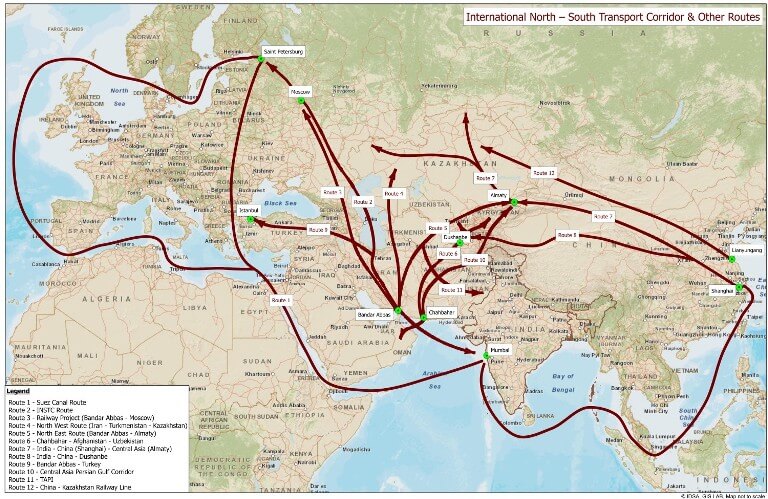
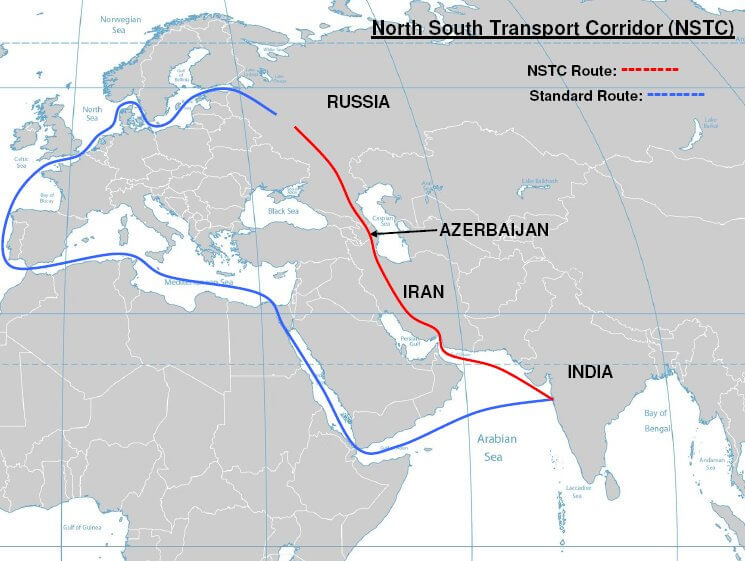
3. Proximity to CIS Countries:
Iran shares land borders with several Central Asian countries, including Turkmenistan, Azerbaijan, and Armenia. This proximity makes Iran an ideal gateway for logistics operations to and from the Commonwealth of Independent States (CIS), fostering economic connectivity between these nations.
4. Connectivity via Road and Rail:
Robust road and rail networks crisscross Iran, providing seamless connectivity to neighboring countries and beyond. The extensive road infrastructure facilitates efficient land transport, while rail connections contribute to the development of multimodal transportation corridors.
5. Gateway to the Indian Subcontinent:
Iran serves as a gateway for trade between the Indian Subcontinent and the rest of the world. The port city of Chabahar, in particular, is emerging as a key transit point, offering a strategic alternative to traditional shipping routes.
6. Time and Cost Efficiency:
The strategic location of Iran allows for shorter transit times between major economic regions. This geographical advantage contributes to cost efficiency in logistics operations, making Iran an attractive option for businesses aiming to optimize their supply chains.
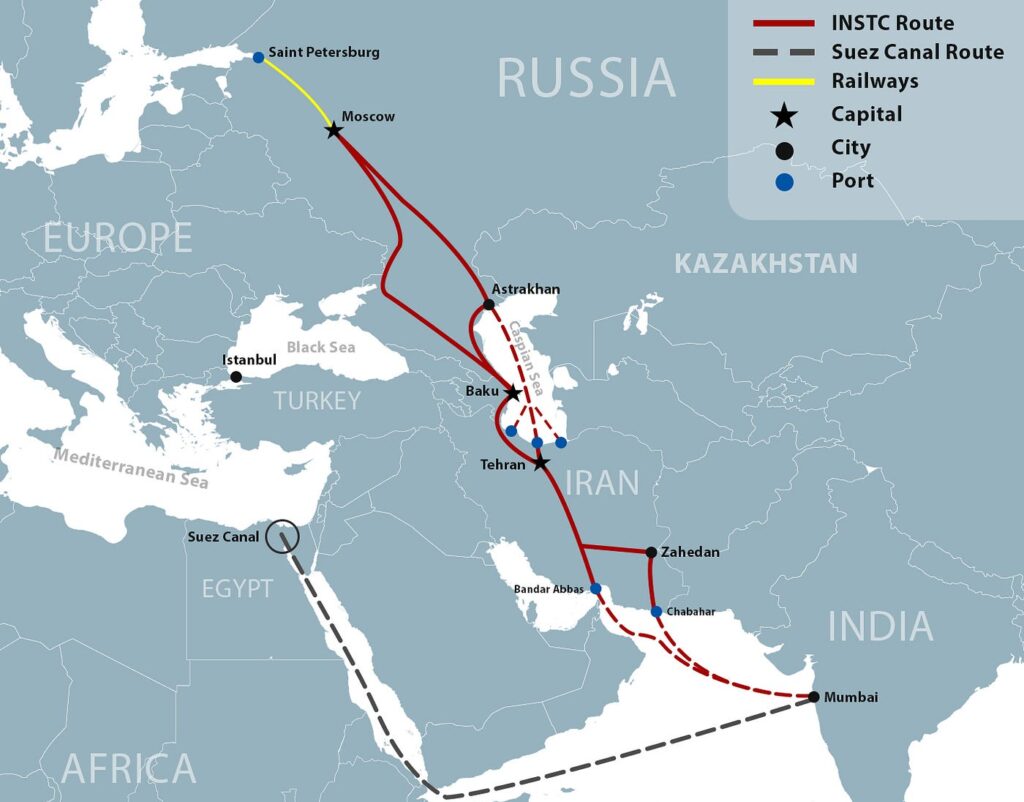
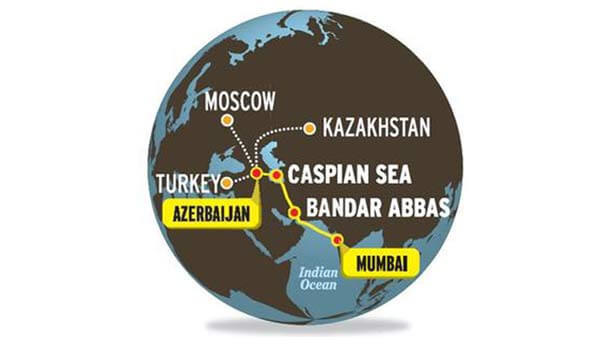
7. Multimodal Transit Opportunities:
Iran’s diverse geography facilitates multimodal transportation options. From sea and air to road and rail, businesses can seamlessly integrate different modes of transport to create efficient and flexible logistics solutions.
8. Potential for Trade Corridor Development:
Iran’s commitment to enhancing its logistics infrastructure, combined with its strategic partnerships with neighboring countries, presents opportunities for the development of new and improved trade corridors. These corridors not only benefit Iran but also contribute to the economic development of the entire region.
Iran, with its strategic location, offers a diverse range of logistics services, seamlessly connecting global businesses through various transportation modes. The country’s logistical infrastructure spans sea, land, air, rail, and multimodal transits, providing comprehensive solutions for international trade.
Key Ports:
- Bandar Abbas: Positioned on the Persian Gulf, Bandar Abbas is Iran’s principal port, acting as a major hub for sea freight.
- Chabahar: Located on the Gulf of Oman, Chabahar serves as a strategic port, facilitating trade with Central Asian countries and providing an alternative route for shipments.
Corridors:
- Persian Gulf Corridor: Links Iranian ports to the global shipping network, connecting to major international trade routes.
- Chabahar Corridor: An emerging corridor connecting Chabahar to Afghanistan, Central Asia, and beyond, offering a bypass to traditional routes.
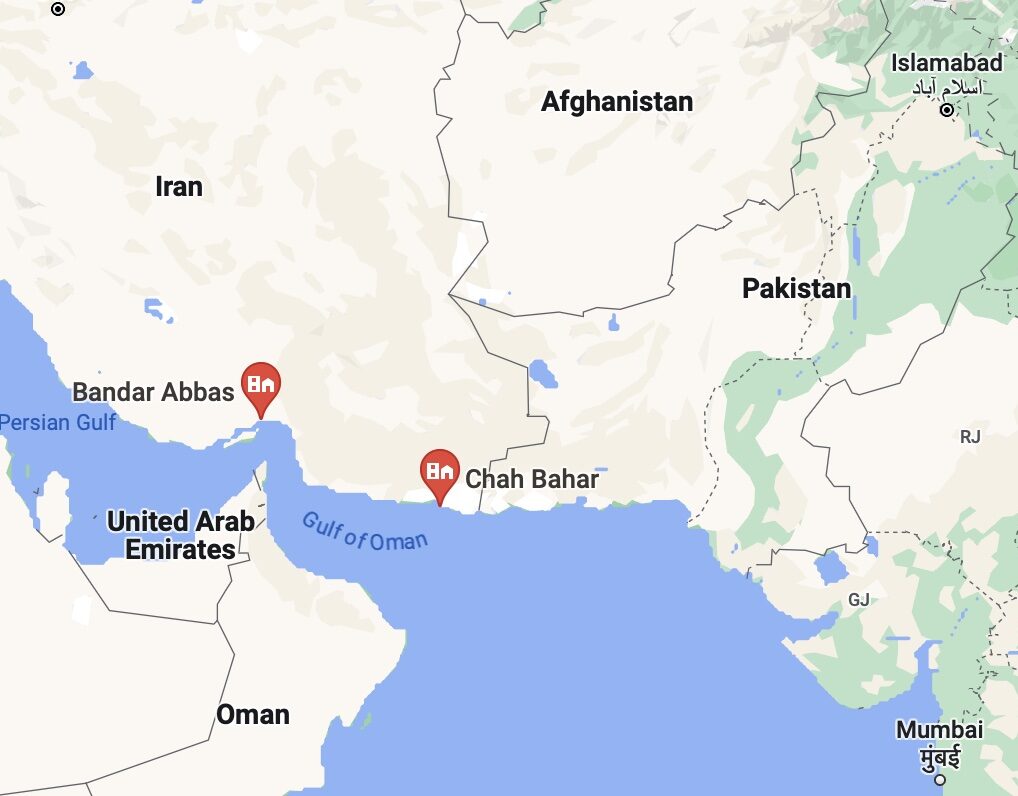
Secure and Efficient Vehicle Transportation
Road Networks:
- Iran boasts an extensive road network, connecting to neighboring countries such as Turkey, Iraq, Afghanistan, and Pakistan.
Corridors:
- Turkey-Iran Corridor: Connecting Tehran to Istanbul, providing a key land route for trade between the Middle East and Europe.
- North-South Corridor: Extending from Russia to India, passing through Iran, offering a vital route for land freight.
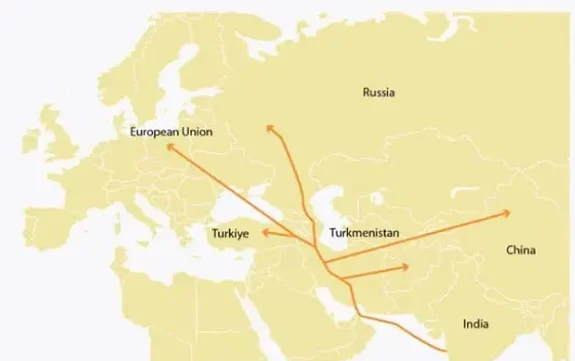
International Airports:
- Imam Khomeini International Airport (IKA): A major hub for international air freight, handling a significant volume of cargo traffic.
Corridors:
- Middle East Air Corridor: Links Iran to major international airports in the Middle East and beyond.
- Asia-Europe Air Corridor: Facilitates air cargo transportation between Asia and Europe, passing through Iranian airspace.
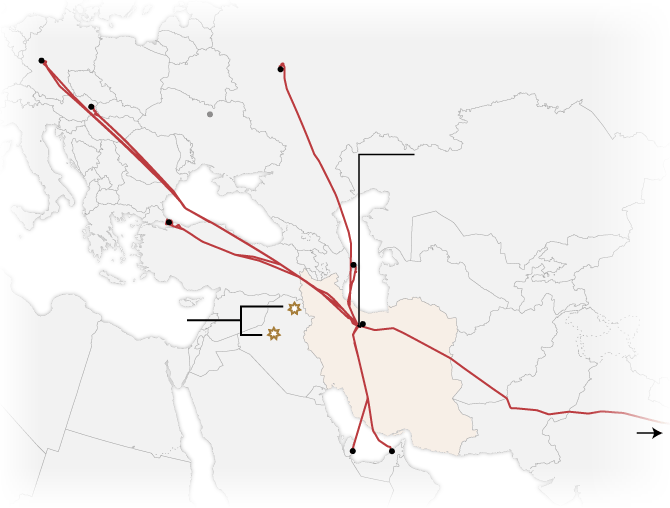
Secure and Efficient Vehicle Transportation
Railway Infrastructure:
- Iran has a well-developed railway network connecting major cities and serving as a key component of the logistics infrastructure.
Corridors:
- North-South Transport Corridor: Extending from Russia to India, this corridor includes rail links through Iran, enhancing connectivity for rail freight.
- East-West Corridor: Connecting Iran to Turkey and beyond, offering an important rail route for cargo transport.
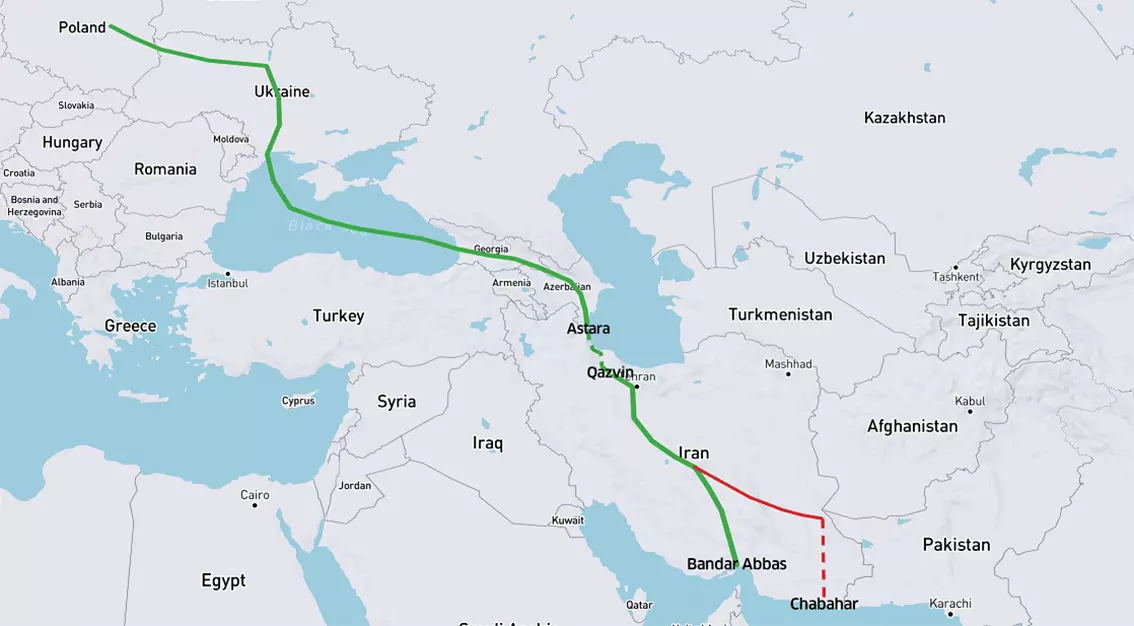
Integration of Modes:
- Iran’s strategic location allows for seamless integration of different transportation modes, offering efficient and flexible logistics solutions.
Examples:
- Sea to Road: Shipping from Mumbai to Bandar Abbas and then utilizing road networks for transit to CIS countries.
- Rail and Road: Combining rail and road transport for a multimodal route, enhancing connectivity and reducing transit times.
Advantages:
- Cost-effective solutions.
- Increased flexibility in transportation planning.
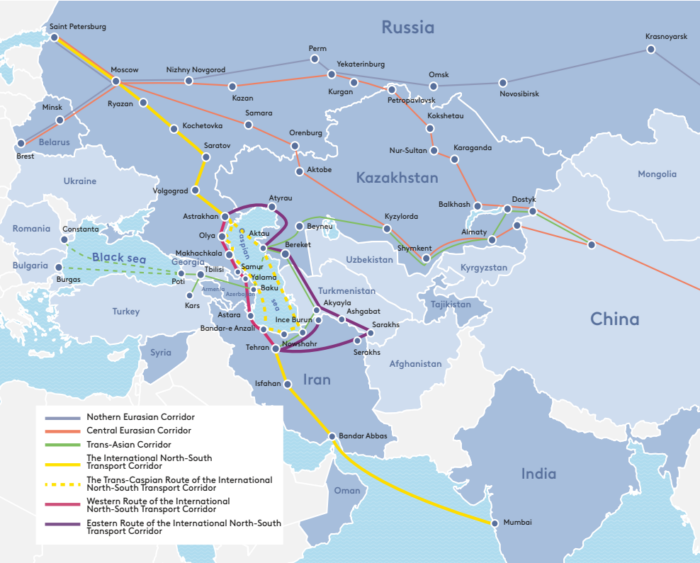
Iran’s logistics services cover a wide spectrum, ranging from sea and land freight to air and rail transport, with a focus on multimodal transits. As the country continues to invest in infrastructure development and strengthen international collaborations, its logistics sector is poised to play an increasingly vital role in global trade and connectivity. Businesses looking for efficient, reliable, and diverse logistics solutions will find Iran to be a key partner in navigating the complexities of international supply chains.
Iran's Vision in Logistics: Navigating the Future of Global Trade
Iran envisions a dynamic and efficient logistics sector that plays a pivotal role in facilitating international trade. The country’s vision encompasses strategic government initiatives, substantial investments in infrastructure, and a commitment to creating a favorable Customs and Regulatory Environment.
1. Government Initiatives:
Strategic Planning:
- Iran’s government is actively engaged in strategic planning to position the country as a key player in global logistics.
- Policies aim to streamline processes, reduce bureaucracy, and enhance the overall efficiency of the logistics sector.
Trade Facilitation Measures:
- Initiatives focus on simplifying customs procedures and documentation requirements, thereby expediting the flow of goods through Iranian ports and borders.
- E-government solutions are being implemented to enhance transparency and reduce delays.
Incentives for Logistics Companies:
- The government provides incentives to attract and support international logistics companies, encouraging them to establish a presence in Iran.
- These incentives may include tax benefits, reduced tariffs, and streamlined administrative processes.
2. Investments in Infrastructure:
Ports and Terminals:
- Significant investments are directed towards the development and expansion of key ports, such as Bandar Abbas and Chabahar.
- Modernization of port facilities enhances their capacity to handle increased cargo traffic.
Road and Rail Networks:
- Ongoing investments in road and rail infrastructure focus on improving connectivity both domestically and internationally.
- The Trans-Iranian Railway is being expanded and upgraded to accommodate growing freight demands.
Technology Integration:
- Implementation of advanced technologies, such as tracking systems and automation, contributes to the efficiency of logistics operations.
- Integration of digital platforms and smart solutions aids in real-time monitoring and optimization of supply chain processes.
3. Customs and Regulatory Environment:
Simplified Customs Procedures:
- The Iranian government is committed to simplifying customs procedures, reducing paperwork, and expediting customs clearance for imported and exported goods.
- Measures are in place to enhance the transparency and predictability of customs processes.
Regulatory Reforms:
- Ongoing regulatory reforms seek to create a business-friendly environment for logistics operations.
- Flexibility in regulatory frameworks is encouraged to adapt to the evolving needs of the logistics industry.
Capacity Building:
- The government is investing in the training and capacity building of customs officials to ensure a skilled workforce capable of handling modern logistics challenges.
- Collaboration with international organizations for knowledge exchange and best practices is actively pursued.
Iran’s vision in logistics is driven by a holistic approach that addresses not only the physical infrastructure but also the regulatory and procedural aspects of international trade. Through strategic government initiatives, substantial infrastructure investments, and a commitment to creating an efficient Customs and Regulatory Environment, Iran aims to position itself as a logistics hub capable of meeting the evolving demands of global trade. As these efforts continue, the country is well-poised to attract international logistics players and contribute significantly to the seamless flow of goods on the international stage.
Target Markets for Iran's Logistics Services: Unlocking Global Connectivity
Iran’s logistics sector has identified specific target markets to forge strategic partnerships and enhance its global footprint. The primary focus is on attracting international logistics companies, catering to the needs of importers and exporters, with a special emphasis on fostering strong ties with countries in the Commonwealth of Independent States (CIS).
Collaborative Opportunities:
- Iran welcomes collaborations with international logistics firms seeking a reliable partner in the region.
- Joint ventures and partnerships are encouraged to leverage the local expertise and global reach of these companies.
Comprehensive Services:
- Highlighting the diverse range of logistics services offered by Iran, including sea, land, air, and multimodal transportation solutions.
- Emphasizing the strategic location of Iran as a gateway between East and West, showcasing the advantages of utilizing Iranian routes.
Incentives for Collaboration:
- The Iranian government provides incentives to international logistics companies, such as tax benefits, reduced tariffs, and streamlined administrative processes.
- Access to a growing market and participation in the development of key trade corridors serves as additional motivation.
Strategic Connectivity:
- Recognizing the importance of CIS countries as key trade partners, Iran aims to strengthen connectivity and foster economic collaboration.
- Highlighting the advantageous geographical proximity and well-established transportation links between Iran and CIS nations.
Trade Facilitation Measures:
- Implementing measures to simplify customs procedures and documentation, enhancing the ease of trade between Iran and CIS countries.
- Facilitating cross-border movements and reducing bureaucratic hurdles.
Sector-Specific Collaboration:
- Exploring sector-specific collaborations, such as energy and agriculture, where there is potential for mutually beneficial trade.
- Tailoring logistics solutions to meet the unique requirements of businesses operating in CIS countries.
2. Importers and Exporters:
Tailored Logistics Solutions:
- Offering customized logistics solutions to meet the specific needs of importers and exporters engaged in international trade.
- Providing end-to-end services that streamline the movement of goods from point of origin to final destination.
Efficiency and Cost Savings:
- Emphasizing the efficiency of Iranian logistics services in reducing transit times and optimizing supply chain operations.
- Cost-effective solutions, combined with reliable transit routes, position Iran as an attractive choice for businesses engaged in global trade.
Trade Corridors Development:
- Collaborating with importers and exporters to explore and develop new trade corridors that align with their business objectives.
- Facilitating seamless movement of goods through well-established and emerging routes.
Iran’s logistics sector is strategically positioning itself to serve the needs of international logistics companies, importers, and exporters. The focus on fostering collaborations with entities from diverse industries, coupled with a targeted approach towards strengthening ties with CIS countries, demonstrates Iran’s commitment to becoming a central player in the global logistics landscape. By offering tailored solutions, optimizing trade corridors, and creating an environment conducive to international partnerships, Iran aims to contribute significantly to the seamless flow of goods and information on the international stage.
Thank you for exploring the dynamic logistics services offered by our company. We invite you to get in touch with us to discover how we can enhance and streamline your supply chain operations. Whether you are an international logistics company, an importer, an exporter, or a business with specific logistics needs, we are here to provide comprehensive solutions tailored to your requirements.
Contact Information:
Address:
No124. 3rd Floor, Zayandeh Rood Bldg, Ferdowsi St. Isfahan, Iran
Phone:
+98 313 223 1077
Email:
sales3@radtarabar.com





